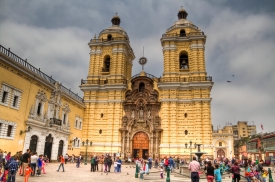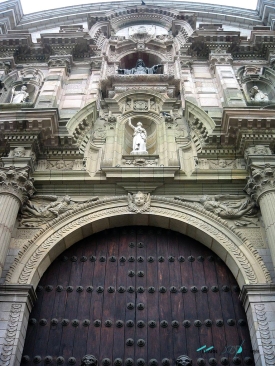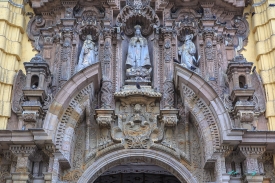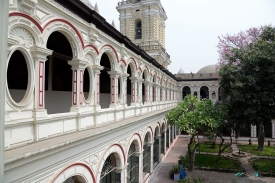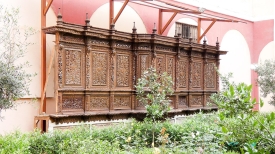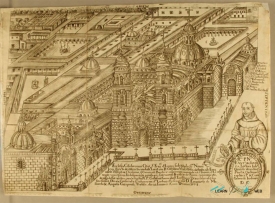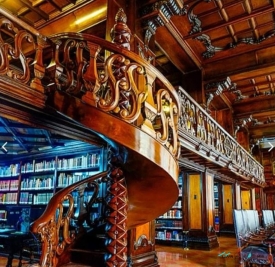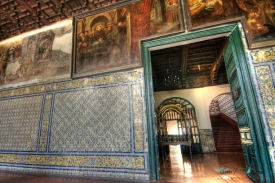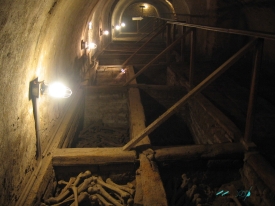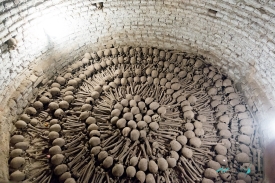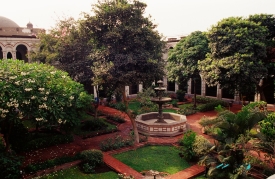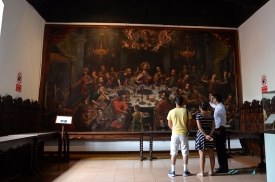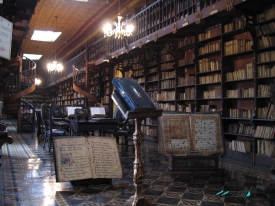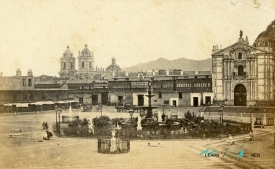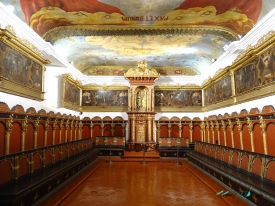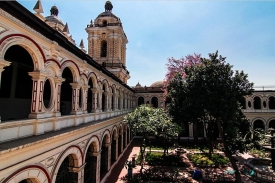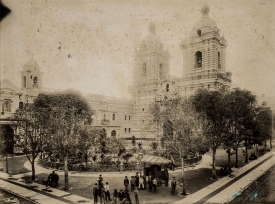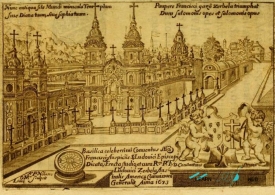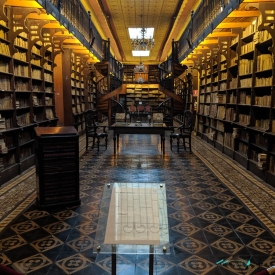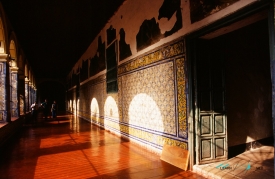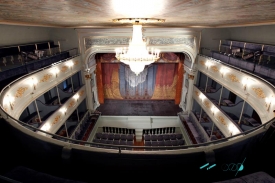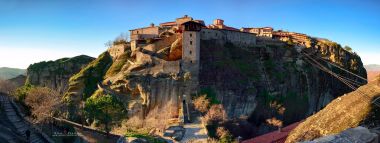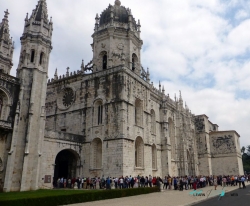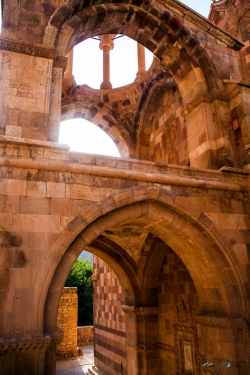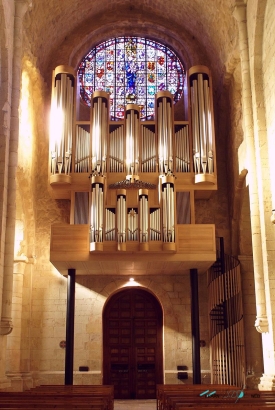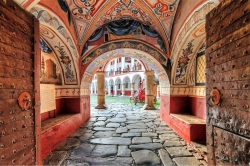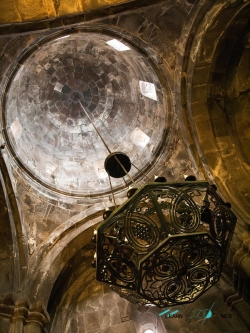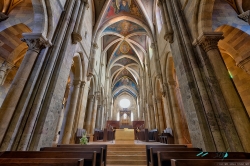ABOUT Basilica and Convent of San Francisco of Lima
The San Francisco de Lima Monumental Complex is a jewel of Peruvian colonial architecture and art. Every corner of the Franciscan basilica and convent takes us back to almost 500 years of history of Colonial, Republican and modern Lima. Especially the nearly 300 years of the viceroyalty, when Lima was the center of Spanish power in South America, when the Catholic faith was deeply rooted in the lives of all its inhabitants.
It is one of the main tourist attractions in the city. Since the foundation of the city of Lima, it was the seat of the Franciscan congregation. In 1535 the construction works of the main church began, later the convent was built, being the largest religious and colonial architectural complex in the city.
Currently the convent is also a museum, thanks to the enormous artistic wealth it possesses, in its facilities works by great masters of painting, such as Francisco de Zurbarán, and canvases from the workshop of the great Flemish master Pieter Paul Rubens are preserved. The museum preserves many gold and silver jewels, furniture from the 16th and 17th centuries,
Its environments, preserved over time, allow us to see cloisters adorned with tiles that were brought from Seville, donated by the mythical Catalina Huanca, goddaughter of Francisco Pizarro, one of the richest indigenous women in Peru at the time. Today the tourist can tour almost the entire convent, admire its fountains, arches and gardens that preserve the Franciscan religious atmosphere. On the walls of its halls, bedrooms, chapels, as well as in its patios, religious paintings and altarpieces are preserved. The most attractive part of a visit to this museum-convent is its crypts, popularly known as "catacombs", where there are thousands of skulls and bones, remains of the people of Lima who chose, when they died, to be buried under the convent, believing that it guarantees them eternal peace and forgiveness of your sins. The "catacombs", as there are many in Europe, are a labyrinth of passageways and doors, which many say communicate with the former palace of the Viceroy of Peru.
The convent preserves one of the most beautiful libraries in Peru, and in the world, it seems the setting of the novel "The name of the rose", by Umberto Eco. Its library, with original baroque decoration, houses some 20 thousand volumes, among which There are true bibliographical gems and rare editions, incunabula, such as a Bible printed in the fifteenth century, among other books printed before the discovery of America. Also inside, more than six thousand parchments are preserved, which are the object of study.
The square of San Francisco is a magical setting, which is why it has been used many times to stage plays, such as: "Life is a dream" by Pedro Calderón de la Barca, as well as the location of several films.
It is one of the main tourist attractions in the city. Since the foundation of the city of Lima, it was the seat of the Franciscan congregation. In 1535 the construction works of the main church began, later the convent was built, being the largest religious and colonial architectural complex in the city.
Currently the convent is also a museum, thanks to the enormous artistic wealth it possesses, in its facilities works by great masters of painting, such as Francisco de Zurbarán, and canvases from the workshop of the great Flemish master Pieter Paul Rubens are preserved. The museum preserves many gold and silver jewels, furniture from the 16th and 17th centuries,
Its environments, preserved over time, allow us to see cloisters adorned with tiles that were brought from Seville, donated by the mythical Catalina Huanca, goddaughter of Francisco Pizarro, one of the richest indigenous women in Peru at the time. Today the tourist can tour almost the entire convent, admire its fountains, arches and gardens that preserve the Franciscan religious atmosphere. On the walls of its halls, bedrooms, chapels, as well as in its patios, religious paintings and altarpieces are preserved. The most attractive part of a visit to this museum-convent is its crypts, popularly known as "catacombs", where there are thousands of skulls and bones, remains of the people of Lima who chose, when they died, to be buried under the convent, believing that it guarantees them eternal peace and forgiveness of your sins. The "catacombs", as there are many in Europe, are a labyrinth of passageways and doors, which many say communicate with the former palace of the Viceroy of Peru.
The convent preserves one of the most beautiful libraries in Peru, and in the world, it seems the setting of the novel "The name of the rose", by Umberto Eco. Its library, with original baroque decoration, houses some 20 thousand volumes, among which There are true bibliographical gems and rare editions, incunabula, such as a Bible printed in the fifteenth century, among other books printed before the discovery of America. Also inside, more than six thousand parchments are preserved, which are the object of study.
The square of San Francisco is a magical setting, which is why it has been used many times to stage plays, such as: "Life is a dream" by Pedro Calderón de la Barca, as well as the location of several films.
The Best Pictures of Basilica and Convent of San Francisco of Lima
Videos of Basilica and Convent of San Francisco of Lima









